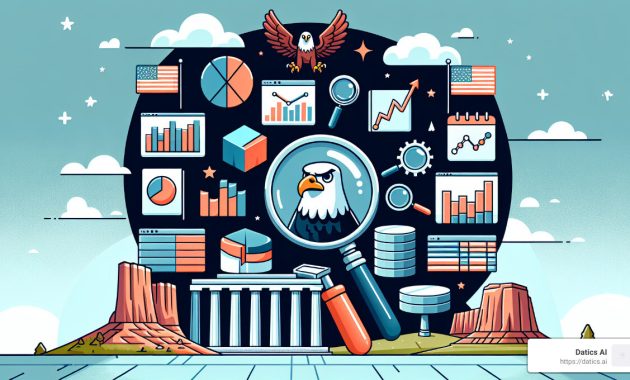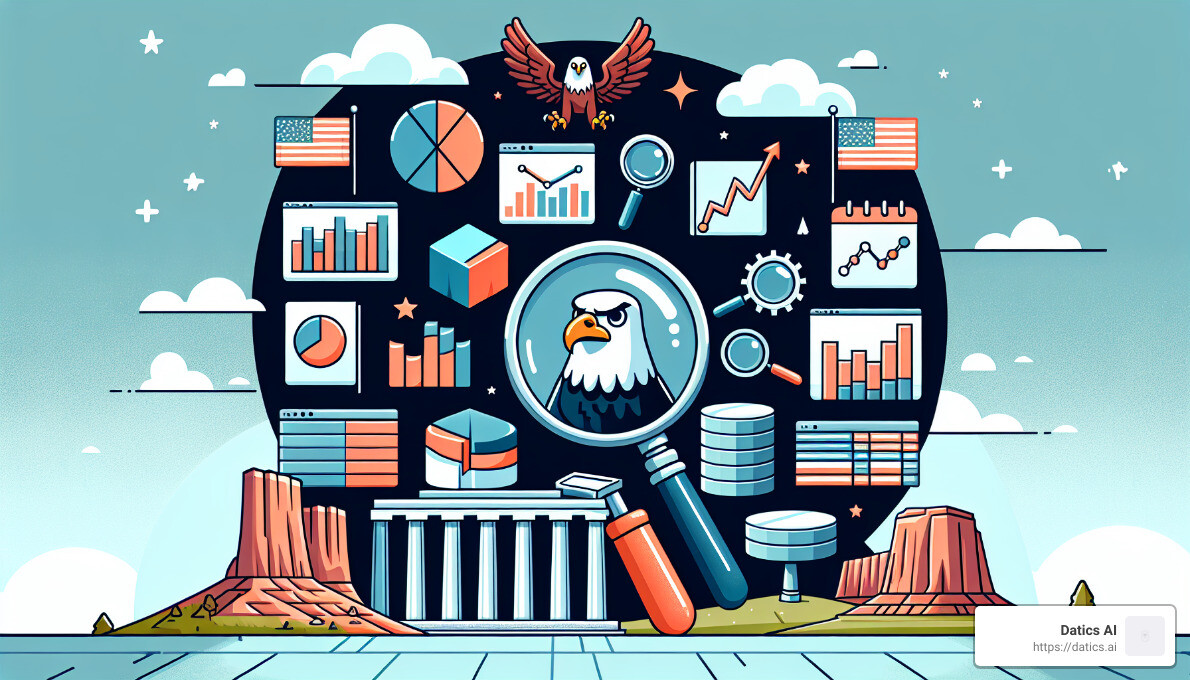
Boost Your Growth with 12 Business Intelligence Tools Revealed
In today’s data-driven world, businesses are constantly seeking ways to gain a competitive edge. The key lies in understanding the vast amounts of information available. This is where business intelligence (BI) tools come into play. These tools empower organizations to analyze data, identify trends, and make informed decisions. This article unveils 12 powerful business intelligence tools that can significantly boost your growth. We’ll explore their features, benefits, and how they can transform your data into actionable insights. The right BI tools can unlock unprecedented opportunities for expansion and success.
The Power of Business Intelligence
Business intelligence is more than just collecting data. It is about transforming raw data into meaningful information. This information then drives strategic decision-making. BI tools provide the necessary infrastructure to achieve this. They offer functionalities such as data visualization, reporting, and advanced analytics. These capabilities allow businesses to monitor performance, identify areas for improvement, and predict future trends. Effective use of business intelligence leads to increased efficiency, reduced costs, and enhanced profitability. It also allows for better customer understanding and improved product development. [See also: The Future of Data Analytics in Business]
Key Features of Effective BI Tools
Before diving into specific tools, it’s essential to understand the core features of a robust BI solution. These features ensure the tool’s effectiveness and usability. Consider these crucial aspects:
- Data Integration: The ability to connect to various data sources. This includes databases, spreadsheets, and cloud services.
- Data Visualization: Creating charts, graphs, and dashboards. These visual aids help in understanding complex data.
- Reporting: Generating customizable reports. These reports provide key performance indicators (KPIs).
- Data Analysis: Performing statistical analysis and identifying trends. This helps in making data-driven decisions.
- Data Security: Ensuring data privacy and compliance. This is critical for protecting sensitive information.
- User-Friendliness: The tool should be easy to use and navigate. Intuitive interfaces are essential for all users.
Top Business Intelligence Tools to Consider
Now, let’s explore 12 business intelligence tools that can help you boost your growth. These tools cater to a variety of needs and budgets.
Tableau
Tableau is a leading data visualization and analytics platform. It’s known for its user-friendly interface and powerful features. Tableau allows you to connect to various data sources. It also enables you to create interactive dashboards and reports. This makes it ideal for businesses of all sizes. Its drag-and-drop functionality simplifies data analysis. This helps in gaining quick insights. [See also: Data Visualization Best Practices]
Microsoft Power BI
Microsoft Power BI is a comprehensive business intelligence tool. It integrates seamlessly with other Microsoft products. Power BI offers robust data modeling, visualization, and reporting capabilities. It’s a cost-effective solution for many organizations. Power BI is user-friendly, making it accessible to both technical and non-technical users. It can connect to a wide variety of data sources. This includes Excel, SQL Server, and cloud services.
Qlik Sense
Qlik Sense is another powerful BI platform. It focuses on data discovery and self-service analytics. Qlik Sense uses an associative data model. This allows users to explore data freely and uncover hidden insights. Its intuitive interface and strong data visualization capabilities make it a valuable tool. This is especially true for businesses needing interactive data exploration. Qlik Sense is a great choice for in-depth data analysis.
Looker
Looker, now part of Google Cloud, is a modern BI platform. It emphasizes data governance and collaboration. Looker allows you to build a single source of truth for your data. It also facilitates consistent reporting across your organization. Its advanced analytics features and SQL-based data modeling make it a powerful tool. Looker is best suited for organizations with advanced data needs.
Sisense
Sisense is a business intelligence platform focused on embedded analytics. It allows you to integrate analytics directly into your applications. Sisense is known for its speed and scalability. It enables businesses to analyze large datasets efficiently. Sisense is ideal for organizations that need to provide analytics to their customers or partners.
ThoughtSpot
ThoughtSpot is a search-driven analytics platform. It enables users to ask questions and get instant answers from their data. ThoughtSpot uses natural language processing (NLP). This makes it easy for anyone to explore data. Its intuitive interface and AI-powered insights make it a powerful tool. ThoughtSpot is great for quick data exploration.
Zoho Analytics
Zoho Analytics is a self-service BI and analytics platform. It is suitable for small and medium-sized businesses. Zoho Analytics offers a user-friendly interface and affordable pricing. It provides strong data visualization and reporting features. Zoho Analytics integrates with various Zoho apps. It also connects to other popular business applications. This makes it easy to analyze your data.
Domo
Domo is a cloud-based BI platform. It provides real-time data insights and collaboration features. Domo offers a unified platform for data integration, visualization, and reporting. It’s designed for businesses of all sizes. Domo is known for its ease of use and mobile accessibility. It also offers strong collaboration features.
Board
Board is a decision-making platform that combines BI, CPM, and analytics. It offers a unified platform for planning, forecasting, and analysis. Board is designed for complex business processes. It supports strategic decision-making. Board offers a comprehensive suite of features. These features include financial planning, budgeting, and reporting.
Yellowfin
Yellowfin is a BI platform focused on data storytelling. It offers automated insights and data visualization. Yellowfin’s features include data storytelling and collaboration. Yellowfin is suitable for businesses that need to communicate data effectively. This includes providing clear and concise insights. Yellowfin is a strong tool for driving data-driven decisions.
MicroStrategy
MicroStrategy is an enterprise-grade BI platform. It offers advanced analytics and data visualization. MicroStrategy is known for its scalability and security. It is suitable for large organizations with complex data needs. MicroStrategy supports a wide range of data sources. This makes it flexible for different business requirements.
SAP BusinessObjects
SAP BusinessObjects is a comprehensive BI suite. It offers a wide range of analytics and reporting capabilities. SAP BusinessObjects integrates with SAP systems. It is also suitable for organizations that rely on SAP ERP. SAP BusinessObjects provides a robust platform for data analysis. It is ideal for businesses that want to optimize their operations.
Choosing the Right BI Tool for Your Business
Selecting the right business intelligence tool requires careful consideration. Assess your specific needs and goals. Consider the following factors when making your decision:
- Data Sources: Identify the data sources you need to connect to. Ensure the tool supports them.
- Budget: Determine your budget for the tool. Consider the pricing models and any associated costs.
- User Skill Level: Assess the technical skills of your team. Choose a tool that matches their capabilities.
- Scalability: Consider the future growth of your business. Select a tool that can scale with your needs.
- Features: Evaluate the features offered by each tool. Choose the tool that best meets your requirements.
By carefully evaluating these factors, you can choose the right BI tool. This will help you boost your growth. [See also: How to Implement a Successful BI Strategy]
Implementing a Successful BI Strategy
Implementing a successful business intelligence strategy requires more than just selecting a tool. You need a well-defined plan and a clear understanding of your objectives. Here are some key steps to follow:
- Define Your Goals: Clearly define your business objectives. Determine what you want to achieve with BI.
- Identify Key Metrics: Identify the key performance indicators (KPIs) that matter most. Track these metrics regularly.
- Data Preparation: Clean and prepare your data. Ensure its accuracy and consistency.
- Tool Selection: Choose the right BI tool based on your needs. Consider its features and capabilities.
- Training and Adoption: Train your team on how to use the tool. Promote its adoption across your organization.
- Continuous Improvement: Regularly review and refine your BI strategy. Adapt to changing business needs.
Implementing these steps will increase your chances of success. You will be able to leverage the power of BI. This will lead to significant growth and improved decision-making. Remember that business intelligence tools are crucial. They help you analyze data to boost your growth. By using the right tools, you can unlock valuable insights. These insights will drive strategic decisions. They will also help your business to succeed. Business intelligence tools help businesses gain a competitive edge.
Conclusion: Embrace Data-Driven Growth
In conclusion, business intelligence tools are essential for modern businesses. They empower organizations to make informed decisions. They also provide a competitive advantage. The 12 tools discussed offer a range of features and capabilities. They cater to diverse business needs. By choosing the right tool and implementing a sound strategy, you can unlock the power of data. This will boost your growth and drive your business forward. Embrace the data revolution. Use business intelligence to achieve sustainable success.

